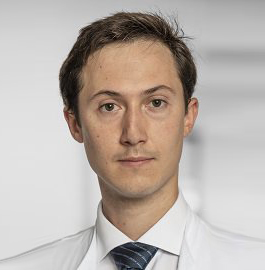Description
The effects of clavicular and periclavicular injuries on the statics of the trunk and spine
BACKGROUND
The scapula is an integral component of the kinematic chain in arm movement. Pathologies and injuries of the shoulder and the shoulder girdle can influence both activation patterns and the strength of periscapular muscles, leading to persistent pain and scapular dyskinesis. Previous studies described a in a shift of the glenohumeral contact point to posterior-superior, an association between acromioclavicular functional impairments and a high rate of scapular dyskinesis after acromioclavicular joint (ACJ) and the clavicle injuries, suggesting an impact on trunk and spine kinematics. The objective of this study was to evaluate whether injuries to ACJ and the clavicle lead to measurable compensatory mechanisms in the trunk and spine.
METHODS
Patients with clavicle and ACJ injuries and healthy control subjects were examined for static posture and kinematics using rasterstereography. Individuals over 55 years of age were excluded. Rasterstereography (DIERS 4Dmotion®Lab and DiCam v3.11) was used to generate a three-dimensional image of the trunk and spine and determine trunk inclination, kyphosis angle, and lordosis angle in the sagittal plane. The cervical apex distance (distance from cervical apex to the lot line) and lumbar apex distance (distance from lordosis apex to the lot line) were determined to assess the posture profile and the deviation from the plumb line in the frontal projection to assess coronal asymmerties.
RESULTS
A total of 40 patients and 50 healthy controls were included. No significant differences in age, weight, height, and BMI were observed. In patients injured on the right side, a significantly higher cervical apex distance compared to the controls (Δ = 10.8 mm, p = 0.0343) and those injured on the left side (Δ = 12.5 mm, p = 0.0230) was observed; however, there was no difference between participants and patients injured on the left side (p: n.s.). Significant differences in plumb line deviation were also observed between patients with injuries on the left and right sides (Δ = 7.8mm, p = 0.0250). No significant differences were found in the analysis of patients with acute (<2 months) and subacute (>3 months) injuries (p: n.s.).
CONCLUSIONS
The extent of compensatory mechanisms induced by clavicle and ACJ injuries in the early phase cannot be clearly quantified using trunk and spine rasterstereography. Our ongoing research aims to clarify the long-term impact of these injuries on static posture.




